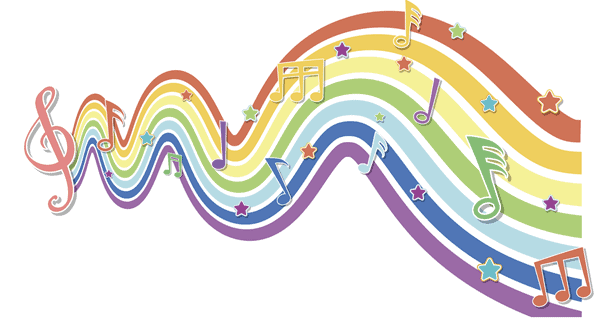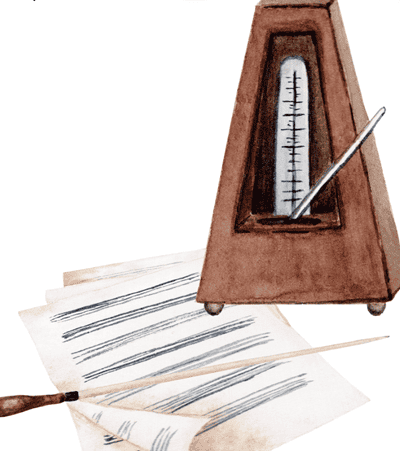“The future of HR technology is not in its promise, but in its performance.”
– Anonymous
Introduction

In the realm of Human Resources, orchestrating a harmonious symphony between HR and its technology is the key to unlocking the true potential of organizations. As HR professionals, we are the conductors of this grand performance, ensuring that the human element in the discipline of HR melds with the technical tools that accompany HR to play in perfect unison. But even the most talented musicians will produce nothing but a cacophonous mess without a skilled conductor, so it is that without a strong hand guiding HR technology, success is impossible.
Are your delicate instruments of HR technology in tune? Let’s explore the art of evaluating the health of our HR technology systems and nurturing our vendor partnerships, drawing inspiration from the melodic brilliance of a symphony orchestra. Together, we will compose a seamless fusion of technology and HR, empowering our employees and elevating our organization’s performance.
Your HR Technology: Hitting the Right Notes?
In today’s fast-paced business landscape, HR technology has become the cornerstone of every successful HR department. As HR professional leaders, we understand that evaluating the health of HR technology systems and vendors is essential for achieving operational excellence and employee satisfaction.

Each system – your HCM, payroll, learning management, etc. – offers unique yet complementary capabilities. Just like in a symphony orchestra, when all instruments are properly integrated, they create a wonderful harmony.
But before we combine the percussion instruments of time and attendance with the woodwinds of payroll, we must make sure that each instrumental system is performing to its highest unique standard. Just like comparing the bass sounds of a tuba to the high pitch of the piccolo would be unwise, we must not evaluate them as an integrated technology stack yet. Instead, we must look at each element of the HR technology stack on its own to ensure that it is performing to its maximum effectiveness before we start looking at how these technology instruments are interacting with each other.
Over time instruments fall out of tune, new sections join the orchestra, and the arrangement demands updating to sound its best. We must therefore have a clear step-by-step process to evaluate where a tune-up is needed. How do we do this?
We comprehensively assess our current vendors and systems from both a technical and user experience standpoint. Additionally, we should explore how to hold vendors accountable and resolve issues when they arise.
Technical Evaluation: Tuning Each Instrument

To embark on an effective evaluation journey, the first step is gaining a profound understanding of your existing HR tech instruments. Start by identifying all the HR technology tools and systems in use, such as applicant tracking systems, HRIS, performance management software, and employee engagement platforms. Map out the data flow and integration points between these systems to ascertain their interconnectivity. Having this flow documented will allow for playing a faster tempo when any change is needed to the overall stack.
Next, get out your tuning fork and look at each of the systems represented in the diagram that you created.
“Harpists spend 90 percent of their lives tuning their harps and 10 percent playing out of tune”
-Igor Stravinsky
Playing to a crescendo

Measure system performance, flexibility, and scalability to ensure it can handle peak loads and grow with our organization. Assess the uptime and response times of your systems to ensure smooth functionality even during peak usage. Are there upcoming events that will create a bigger than usual demand on your system, test to that level plus an additional 15-20% volume so your testing has real vigor.
I don’t know “Data Security”, can you hum a few bars?

A remaster in music refers to the process of reworking and enhancing the quality of an older piece of music to bring it up to modern standards. Similarly, system updates and patches ensure the HR technology symphony remains in perfect harmony. These remixes could be an update that optimizes and refines the existing codebase, improving its efficiency, stability, and security. Is there a documented schedule for such updates and the testing needed prior for them being pushed to production? Maintaining a calendar of such events will allow for a quick pivot when the technological needs may conflict with operational events.
Organizations that embrace advanced HR technology witness a 65% increase in employee engagement.
“We’re putting the band back together.”
-Jake Elwood
With the individual systems each playing their well-tuned notes, it is time to focus on the harmonious arrangement and interactions between the different systems by reviewing the integration capabilities. There should be a seamless data flow between systems. Not only should the data entered in one system pass to the downstream systems but those receiving systems must be able to process that data as intended and designed. A payroll system with a full database of time and HR data but in a format that does not support creating pay results makes as much sense as pounding on the side of a trombone and calling it a drum. Even if the current stack is integrating correctly, it is also advisable to always consider future needs and test whether your technology stack can integrate with new tools and future upgrades.
It’s all about the audience.
The best performance in the world is wasted unless there is someone to witness and enjoy it. In the symphony of HR, it is the employees that make the difference between a true maestro and a starving artist. If we want to be productive as an HR team, we must evaluate the user experience of the HR technology systems to make sure that they are helping to drive employee engagement and satisfaction.
78% of HR professionals believe that a positive user experience is a critical factor in the success of HR technology implementation.
So, what chords should we be striking with our employees?
An intuitive melody

User Interface (UI) and Navigation: Is the system’s user interface (UI) and navigation intuitive and user-friendly? A well-designed user interface orchestrates ease of navigation and accessibility for employees at all levels, while a cluttered or complex UI can lead to frustration and decreased productivity.
“How do you get to Carnegie Hall? Practice. Practice. Practice.”
-Jack Benny
Even with the most intuitive of user interfaces, getting the audience to come to the performance is paramount. Employees must have a high adoption to use of the systems. Adopting a “they will figure it out” mentality will not produce that result. There must be an evaluation of the training resources and job aids. Remember that the true assessment of training materials is whether a user with no prior knowledge of the system can follow the materials and be a successful user of the systems.
Taking this show on the road.

In the era of remote work, mobile access to HR systems is indispensable. Assess whether your systems offer a seamless mobile experience. Is the experience on an Android operating system equal to a user on IOS? Since mobile users may be both employees and managers, there are both simple and complex transactions that must be accounted for. Are there any functionalities in the desktop experience that are unavailable to a mobile user?
Do you take requests?
How do your employees truly feel about the HR tech they use daily? Collect feedback from employees regarding their experience with the systems. Use surveys or focus groups to gain valuable insights and create a technology roadmap for which improvements can be implemented and when.
Fostering Strong Vendor Partnerships: A Symphony of Collaboration

As the conductors of a symphony, we must collaborate closely with musicians to create an extraordinary symphony. Similarly, nurturing strong vendor partnerships demands collaboration and mutual understanding.
As part of an orchestra, every musician must play their part with skill and the correct timing. Our HR technology vendors must be held to similar high standards of accountability. Just as we would never tolerate a musician that only plays every other note, we need to have clear expectations set with our vendors:
- Provide the numeric metrics that are evidence of meeting our departments and the company’s needs. These should be documented as clear and concise service level agreements (SLAs) for vendors to perform in harmony with our goals.
- Regularly review the results with your vendors so that they know exactly how closely they are meeting or failing to meet our goals.
- Cultivate open communication with vendors, allowing us to fine-tune their performance. Just as an audience member has a program to see who is playing specific instruments in an orchestra, the roles and escalation paths for vendor issues should be well-documented.
- Stability matters. Investigate your vendors’ financial stability and reputation in the market. Long-term partnerships with reliable vendors are essential for HR success.
You missed a note.

Just as discordant notes can challenge a symphony, conflicts with vendors require resolution through collaborative efforts:
Proactive Communication
Establish open channels of communication with vendors. Timely reporting of issues leads to quicker resolution. Make note of response time when issues are reported so that can be addressed once the current problem is resolved.
Root Cause Analysis
Collaborate with vendors to identify the underlying cause of problems and prevent recurrence. Root cause is not a “blame game” and human error should never be accepted as the cause of an issue. Always demand a deeper dive into issues. What is it in the vendor’s process that allowed a person to make the mistake. Revisit old RCAs 6-12 months after they were provided. Are the controls put in place at the time of the incident still there and are they working?
Escalation Paths
Define escalation paths for severe issues that require immediate attention and resolution. Using a 2×2 escalation matrix ensures that information is shared both up and down the chain of command at both the client and the vendors organization.
“The true test of a partnership lies in how well it endures through challenges.”
-HR Guru
Conclusion

Just as a symphony orchestra’s performance mesmerizes the audience, the harmonious fusion of HR and technology can elevate organizational performance. By evaluating our HR technology systems and nurturing vendor partnerships, we create an enthralling symphony of HR efficiency.
Step onto the grand stage of HR technology evaluation and vendor partnership nurturing. Let Mercury Performance Group, a company helping organizations of 500 or more employees solve their HR problems, empower their employees, and elevate their performance, lead you in this transformative symphonic journey. Empower your employees, elevate your organization’s performance, and create an enduring masterpiece of HR excellence. The curtain is rising; it’s time for your symphony to begin!

